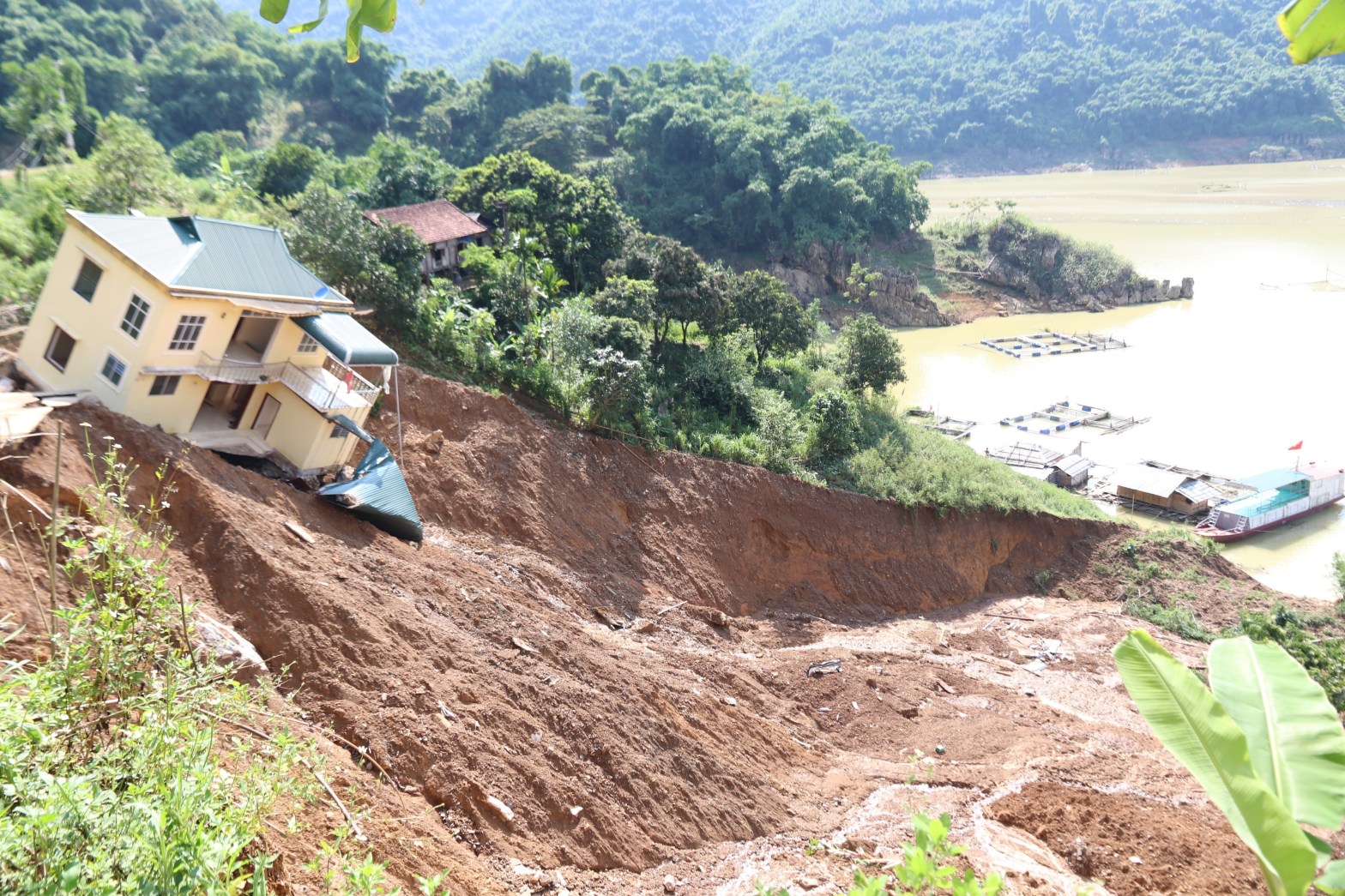At least 29 people have been killed and five others are missing by July 24 after tropical storm Son Tinh triggered flooding in northern Vietnam.
Son Tinh storm, the third occurring in the East Sea so far this year, directly devastated provinces from Thai Binh to Quang Binh from July 17-19. It also triggered torrential rains and floods in the north central provinces of Thanh Hoa, Nghe An and Ha Tinh, and the northern mountainous provinces of Yen Bai and Hoa Binh, causing human and property losses.
Of the dead, 15 were in the northern mountainous province of Yen Bai, six in the northern mountainous province of Son La, three in the northern midland province of Phu Tho, three in the central province of Thanh Hoa, and the others in the northern mountainous provinces of Lao Cai and Hoa Binh.
The natural disasters also destroyed or flooded 12,383 houses, killed or swept away 121,389 heads of livestock, and affected 6,208 ha of aquaculture.
Floods wreak havoc in northern Vietnam. (Source: VNA)
Last month, 23 people died and nine others went missing due to flash floods and landslides triggered by torrential rains in northern mountainous provinces following Ewiniar storm, the second typhoon occurred in the East Sea in 2018.
The floods also pulled down or swept away 161 houses, damaged 958 homes, and submerged 1,800 others.In addition, more than 1,500 ha of rice and crops were inundated or destroyed, while nearly 600ha of aquaculture were damaged, and 738 cattle heads and over 13,800 poultry were killed.
Total damage caused by the storm was estimated at 457.8 billion VND (around 19.5 million USD), including 122 billion VND in Ha Giang, 314 billion VND in Lai Chau and the remainder in neighbouring provinces.
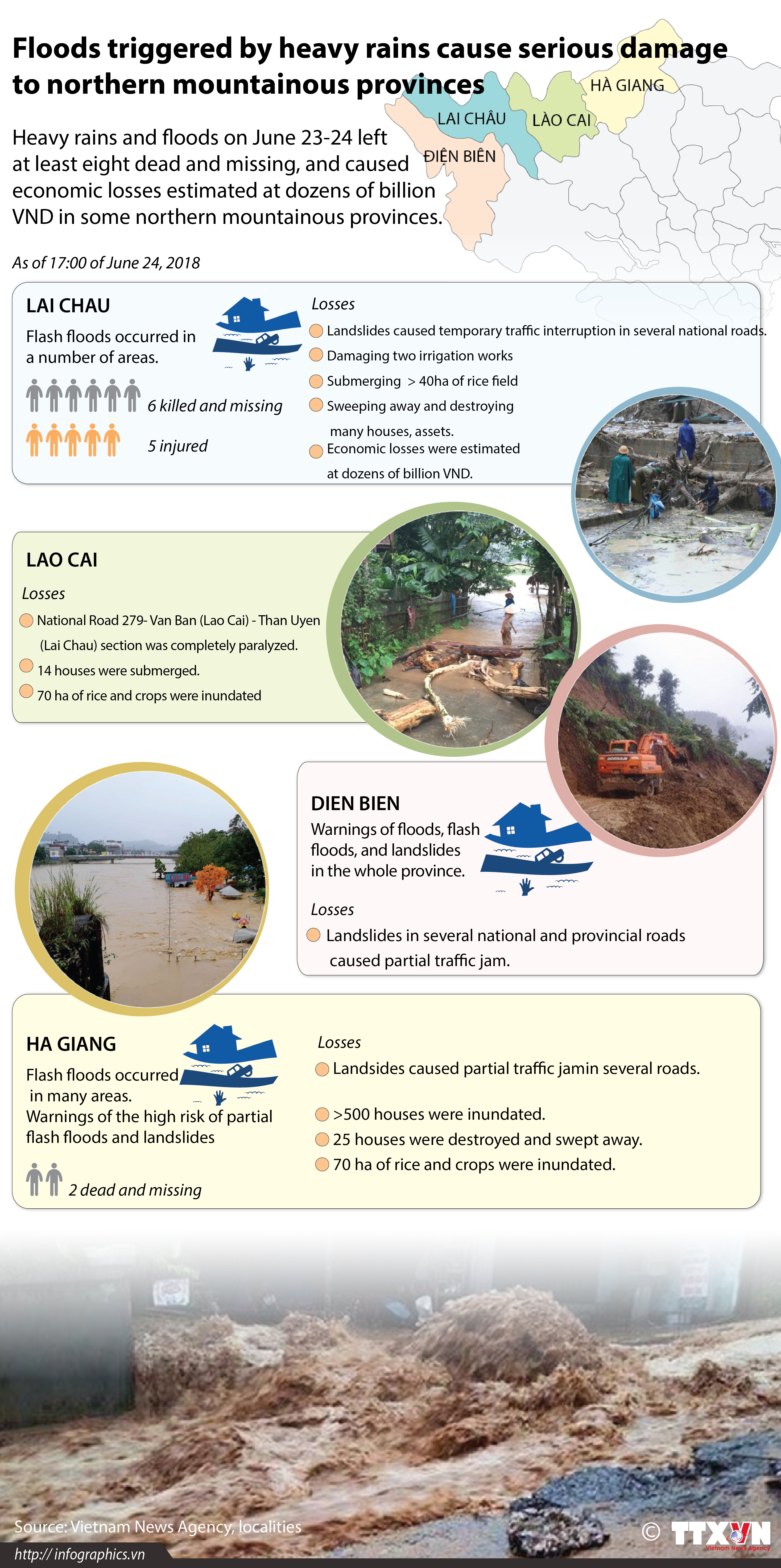
According to the National Hydro-Meteorological Centre (NHMC), the year 2018 will see about 12 – 14 storms and tropical depressions in the East Sea, some 4 – 6 are forecast to directly affect Vietnam’s mainland.
Typhoons and tropical depressions are more likely to hit the northern part of the East Sea at the beginning of this rainy season and will move towards the south in late 2018, threatening to affect the central region.
In 2017, a record number of 16 typhoons and four low pressures occurred in the East Sea. The storms claimed the lives of 386 people in the year, damaged more than 600,000 houses and caused economic losses of about 60 trillion VND (2.64 billion USD), with the worst typhoons being Doksuri and Damrey.
High alert against flash floods, landslide
Vietnam is one of the five countries hardest hit by natural disasters. Over the past two decades, natural disasters left over 400 people dead and missing each year, caused economic losses equal to about 1-1.5 percent of GDP, and affected people’s living environment and conditions, as well as socio-economic activities and sustainable development of the country.
According to the National Centre for Hydro-Meteorological Forecasting (NCHMF), the developments of weather patterns and natural disasters in 2018 will continue to be complicated and unpredictable.
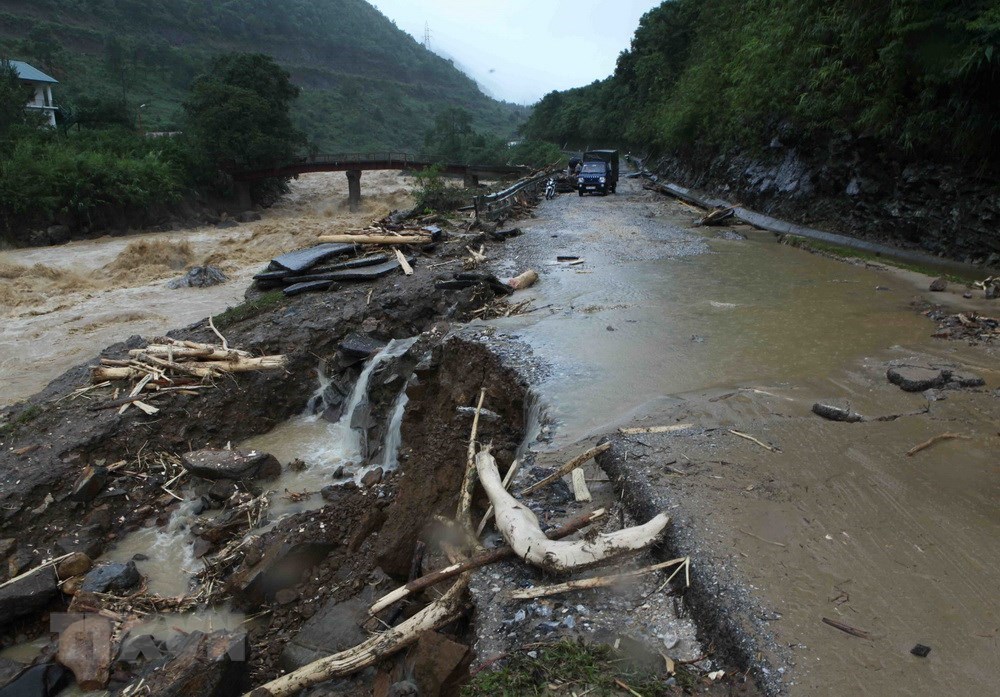
The Prime Minister has issued Directive 19/CT-TTg on preventive measures against flash floods and landslides, which have happened frequently recently in the northern and north central regions.
The directive noted that the recent natural disasters in Lao Cai, Yen Bai, Son La, Lai Chau, Hoa Binh and Nghe An have caused great losses in both human lives and property, due to limited capacity in forecast and warning work as well as poor resistance capacity of local infrastructure. To be better prepared for flash floods and landslides, thus mitigating losses, the PM orders the Central Steering Committee on Natural Disaster Control, the National Committee for Search and Rescue, ministries, sectors and local administrations to strictly carry out the Government’s Resolution 76/NQ-CP dated June 18, 2018 on natural prevention and control.
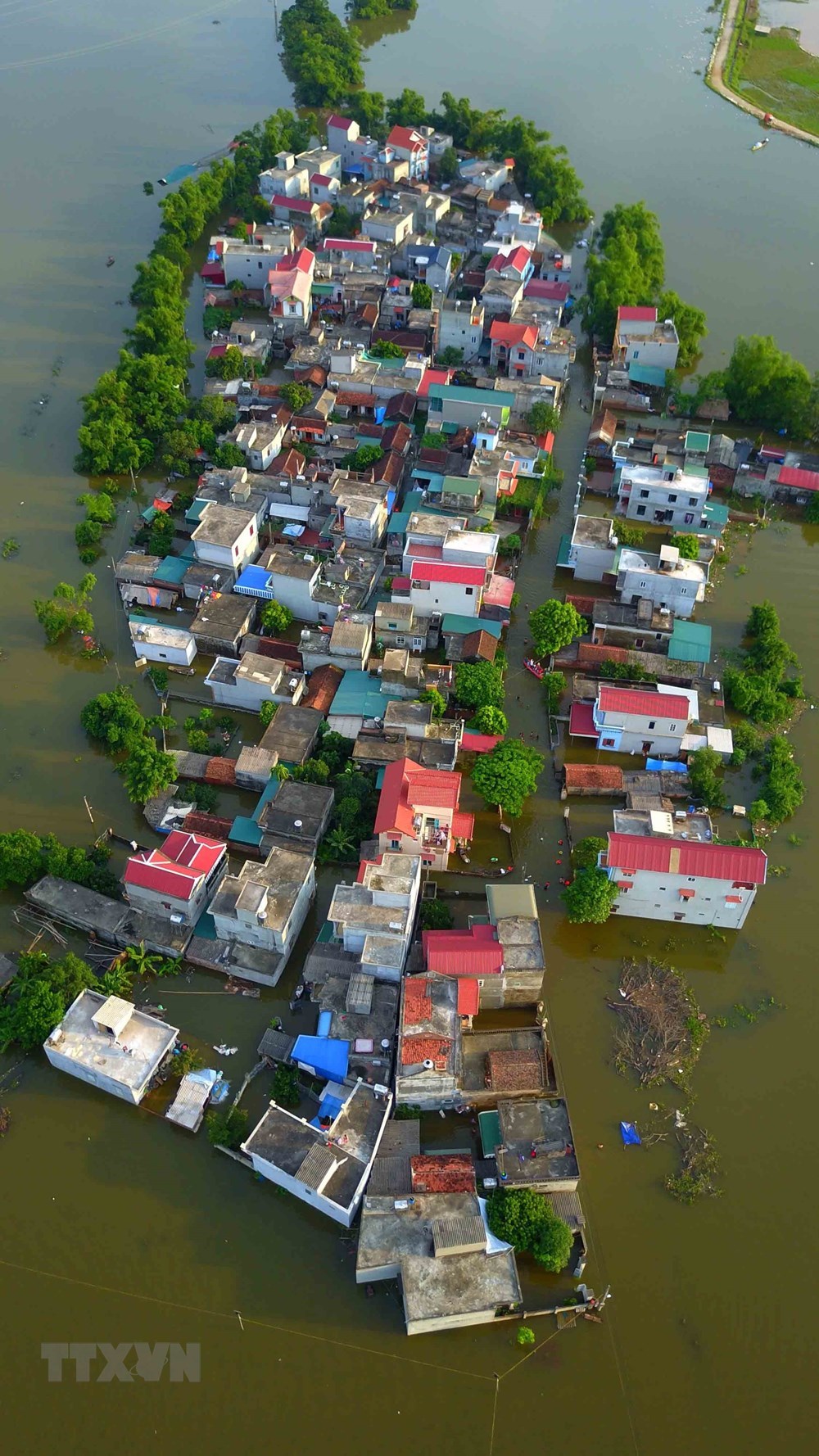
Accordingly, the Chairpersons of People’s Committees of provinces and centrally-run cities are to allocate resources from the local budget, the fund for natural disaster control and other legal sources to help local people settle the consequences caused by flash floods and landslides in late 2017 and early 2018. The focus should be on repairing houses and damaged transport, irrigation, medical and educational facilities, and helping affected people settle down in safe areas.
The directive noted that when rebuilding, schools should be ensured to be resistant to natural disasters so that they can serve as shelter for residents in surrounding areas in emergency.
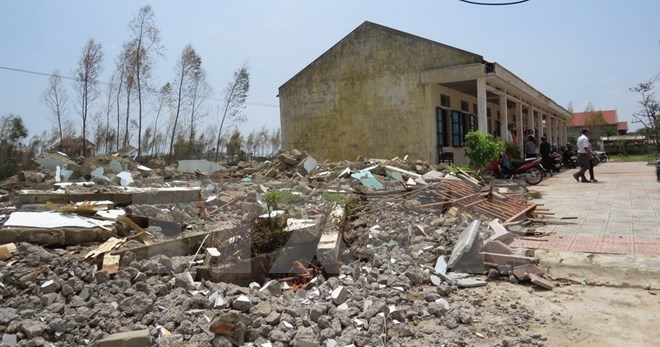
Local administrations should inspect and define areas of high risk to flash floods and landslides, and put up warning signs to inform every hamlet, household, public facility, especially school and clinic. The PM also demands strict management of mining activities to prevent landslide or mine collapse at time of rains or floods. Measures should be taken to limit activities that can increase the risk of flash flood and landslide such as digging into mountains to build houses.
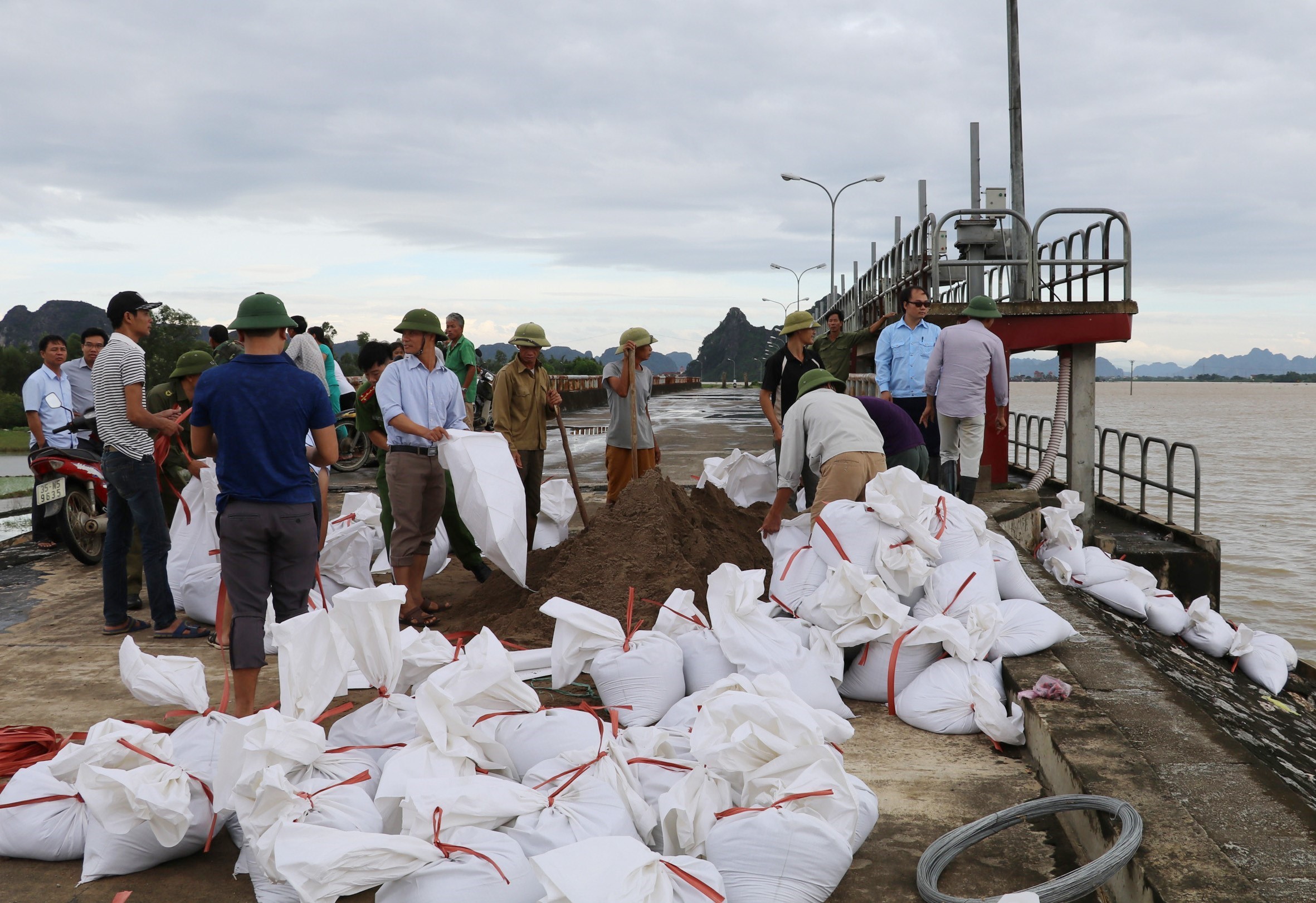
The Ministry of Agriculture and Rural Development is asked to review safety work at irrigation dams and preparations to respond to emergencies at dams, especially those of medium and small sizes managed by local administrations.
The Defence Ministry and Ministry of Public Security are required to get plans and forces ready to assist with response to natural disasters, particularly in evacuating people and assets, conducting search and rescue, delivering relief and aid, and ensuring security and social order, safety in any situation.
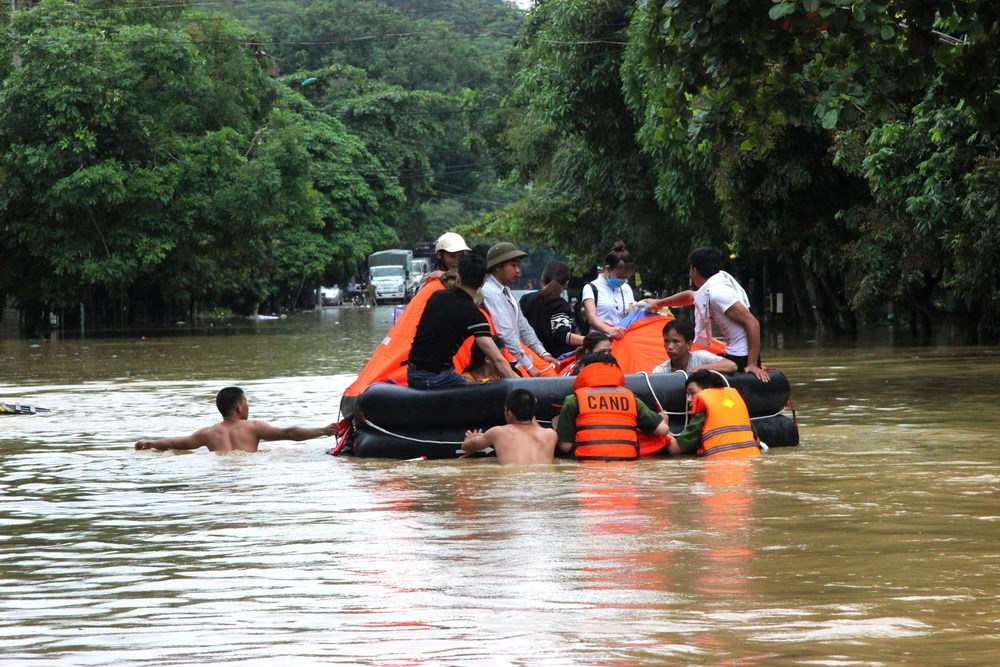
The Transport Ministry is instructed to prepare adequate human resources, vehicles and materials in order to timely respond to transport breakdown caused by natural disasters.
VN looks to integrate UN Sendai Framework into national strategy
Vietnam has built six prioritised programmes for natural disaster prevention, which include key contents of the UN Sendai Framework for Disaster Risk Reduction, heard a consultation session in Hanoi on June 27. The session, the second of its kind, was organised by the Vietnam Disaster Management Authority, Ministry of Agriculture and Rural Development and the Japan International Cooperation Agency (JICA) to collect recommendation on integrating contents of the Sendai Framework in Vietnam’s national strategy on natural disaster prevention and control by 2030 with a vision toward 2050.
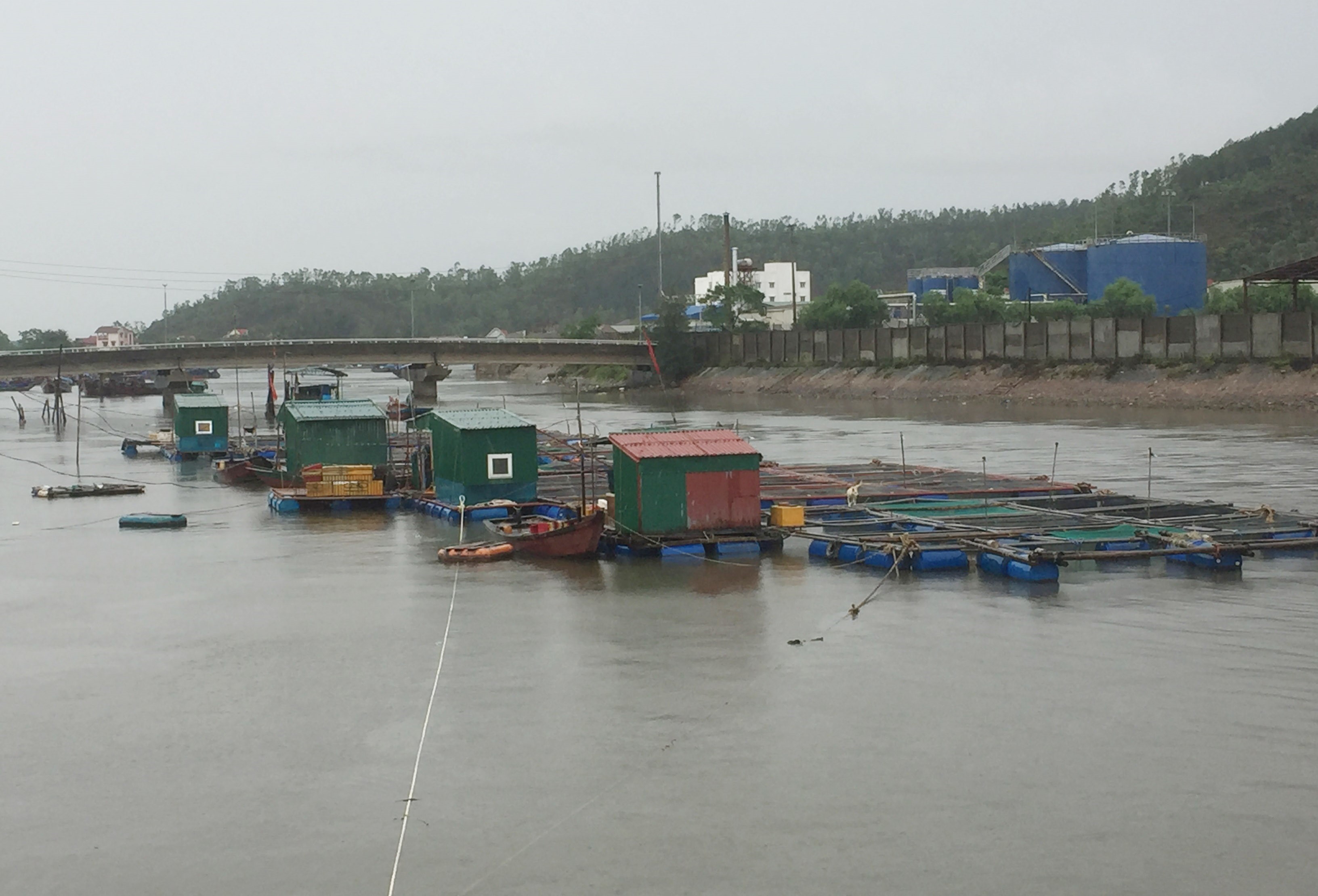
Reports at the function showed that based on the country’s situation and the Sendai Framework’s targets, Vietnam has been focused on efforts to reduce economic losses due particularly to storms, floods and droughts, via investment in natural disaster risk mitigation. The six prioritised programmes deal with capacity building for central and local public agencies and communities; management system for natural disasters data; designing relevant plans for different levels of authorities; comprehensive risk mitigation for storms, floods, and droughts; preventative measures for flash flood and landslide; production and livelihoods restructuring for sustainable development of the Mekong Delta in response to climate change. Deputy Minister of Agriculture and Rural Development Hoang Van Thang said more work is needed to complete institutions, policies and laws in order to improve effectiveness of natural disaster prevention. He noted that so far most attention has been paid to response investment instead of mitigation solutions, adding that many risks come from unsustainable development, citing the examples of infrastructure projects that increased disaster risks.
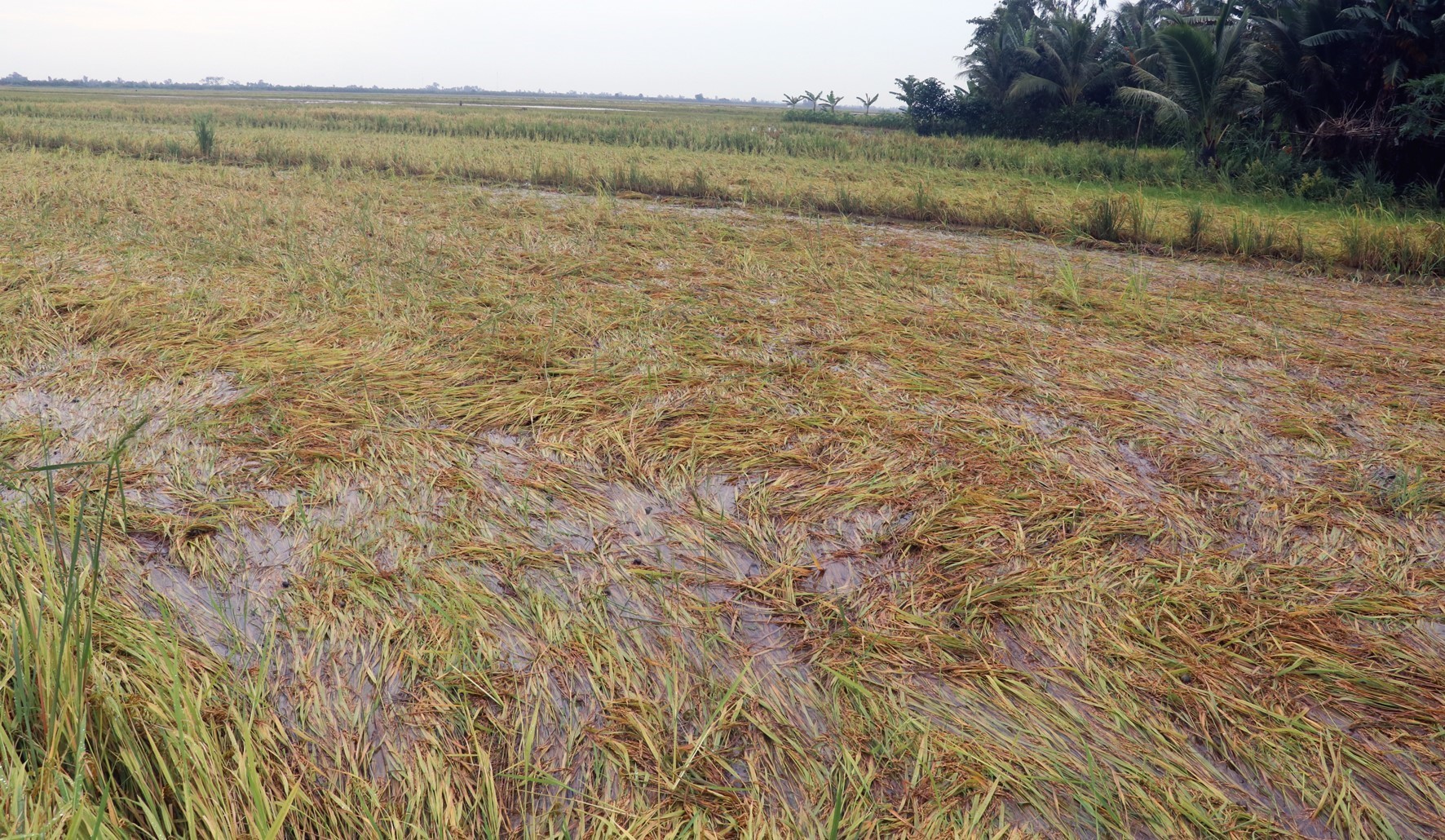
Concerning Vietnam’s prioritised programme for the Mekong Delta, JICA expert Tachi Kenichiro recommended changing the mindset from living with floods to proactively living with floods, inundation and saltwater intrusion.
All types of investments should be accompanied by changes in lifestyle to adapt to new environmental conditions caused by climate change, he suggested, adding that consistent planning and implementation of measures on river water management are also necessary. An integrated multidisciplinary approach should be used to design a master plan for the region’s sustainable development in adaptation to climate change toward 2030 with a vision toward 2050, the expert noted. He also advised the region to upgrade its tracking system for climate change and sea level rise, to update local climate change scenarios and to increase investments in projects to drain floods, control salt intrusion and landslide and protect mangrove forests.
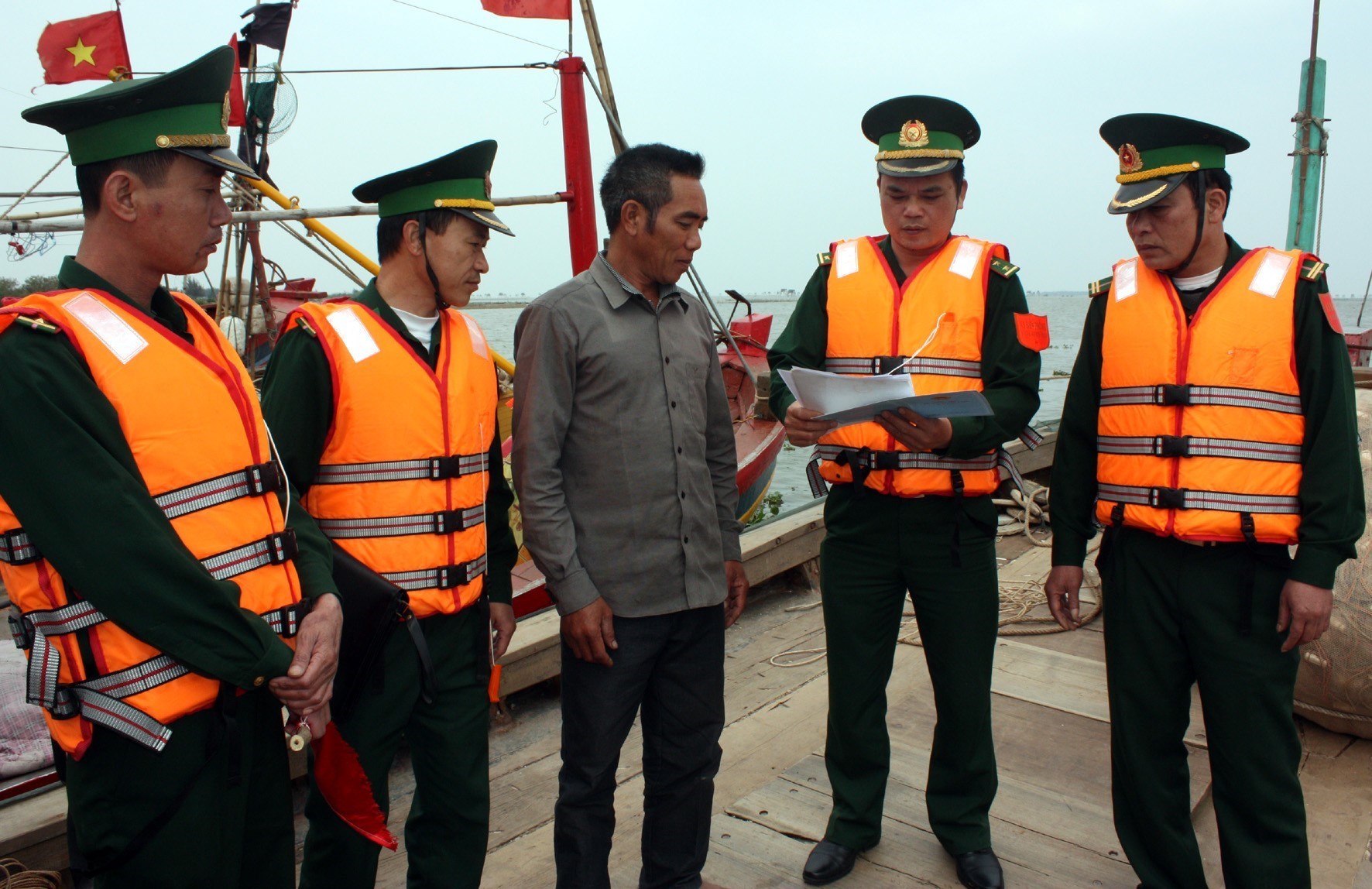
Attention should also be paid to the integration of projects from different sectors and the rearrangement of residential areas and riverside infrastructure for disaster risk reduction, he added.
New technology helps improve disaster forecast
The Vietnam’s National Centre for Hydro-Meteorological Forecasting and the International Typhoon Committee earlier this yearjointly organized a conference in Hanoi to share experience and best practices in analysis and predicting extreme weather events.
Participants to the conference agreed on the need for countries worldwide in general and Vietnam in particular to enhance weather forecast capacity by embracing new technology. They heard that despite advancements in technology, weather forecasters around the world struggle to predict the intensity of emerging storms.
Facebook has launched a programme designed to help Vietnamese officials enhance their capacity of using technology and social networks to cope with natural disasters.
A series of workshops and training courses will be held for officials from the Central Steering Committee for Natural Disaster Prevention and Control.
Facebook also launched the website https://www.facebook.com/PCTTVN/ to help sharing latest information about natural calamities.
Only factors like timing, the relative path and the landing site of a typhoon have been predicted relatively accurately.
In the case of Vietnam, a country that was hit with 16 typhoons in 2017 alone and is predicted to be among the countries most impacted by climate change, the failure to accurately gauge the power of storms might lead to devastating consequences – both in terms of human lives and economic damage. The latest technologies from countries with advanced capacity were introduced and shared in the conference, such as remote sensing or network monitoring. Technological methods to assess the impacts of climate on certain sectors as well as measures to adapt were also discussed. Raymond Tanabe, Director for the Pacific Region of the US National Weather Service, currently serving as a head advisor for the committee, stressed the importance of ensuring that the information could be reached by as many people as possible – especially via popular social media platforms like Facebook or Instagram.

At the conference, representatives from Vietnamese weather forecasting agencies have outlined strategies for the 2018, which would see more investment in a new system of supercomputers as well as upgrading its information networks to handle a large amount of data gathered from satellites.
Tran Hong Thai, Deputy Director General of the National Centre for Hydro-Meteorological Forecasting, said that weather forecast is indeed a “cross-border issue,” and international cooperation with other countries in the Southeast Asia region would also be prioritised.“Vietnam has been an active participant, not only in the sense of learning from others’ experience, but also we have been sharing our data with other countries, all in an effort to deliver better forecasting results,” he added.
More radar installed to improve accuracy in storm, rain forecasting
The Vietnam Meteorological and Hydrological Administration (VMHA) has built a project to enhance the National Centre for Hydrometeorological Forecasting’s capacity to generate warnings on thunderstorms, lightning, storms, and rain by installing five new radar stations across the country.

The stations will be located on Pha Din mountain pass in the northern mountainous province of Dien Bien, in Viet Tri city of the northern midland province of Phu Tho, in Nha Trang city of the central coastal province of Khanh Hoa, in Pleiku city in the Central Highlands province of Gia Lai, and in Quy Nhon city in the south central province of Binh Dinh.

According to Bui Thi Hong Trang from the VMHA, the stations can supply high-resolution weather information within hundreds of kilometers, which is necessary for the forecasting of coastal storms, thunderstorms, and heavy rains.
The stations will be equipped with Vaisala’s C-WRM200 dual polarisation Doppler weather radars, a new radar generation with higher sensitivity and lower costs, said Trang. She added that along with the improved quality of statistics, the radars will also help improve accuracy in alerting dangerous weather phenomena.
“Red-Cross house” to cope with natural calamities
The Vietnam Red Cross Society (VNRC)’s “Red-Cross house” model has helped thousands of impoverished residents in disaster-affected localities build or repair their houses which were destroyed by floods and storms.
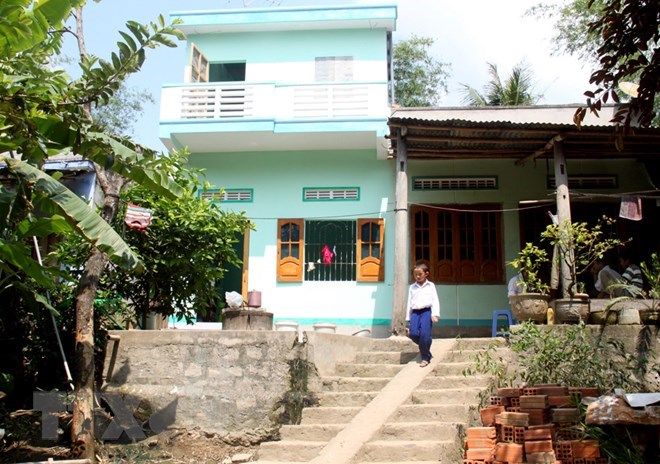
The VNRC at all levels have built more than 24,000 houses for those who suffer heavy loss from natural disasters at the total cost of nearly 700 trillion VND (30.8 billion USD), which was sponsored by international organisations. Over 2,000 houses of which are disaster-resistant houses.
The houses have been built to suit the lifestyle of different ethnic groups and localities across the nation. For example: stilt houses are constructed for ethnic people in the northern mountainous localities while bungalows are popular among Kinh people or those in the south western region. They have helped local residents stabilise their lives soon after the disasters.
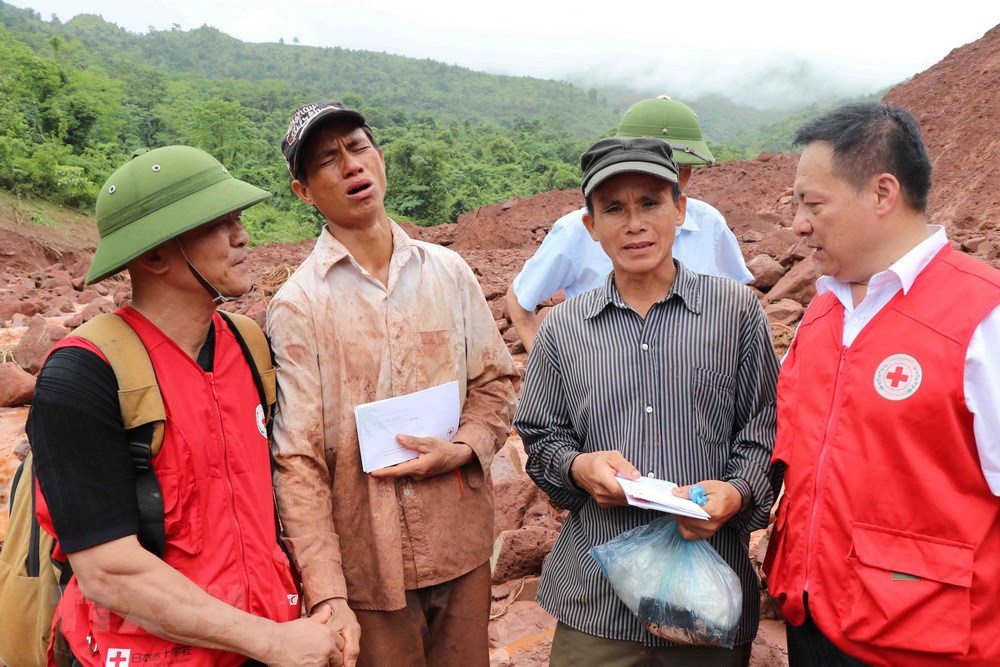
Safe houses to cope with natural calamities, built by the VNRC like the flood-resistant model in Phu Yen province, have shown efficiency when they are able to accommodate 100-400 people in case of floods and storms.However, construction expert Vu Kien Trung noted that the “Red-Cross houses” are usually built on the sites where old houses stood, without considering the sites’ vulnerability to natural calamities. He suggested devising plan to relocate disaster-prone villages and residential areas to safer places.“Building houses in an insecure area will not be a sustainable measure”, he noted.Regarding financial resource for constructing the houses, Trung said that the local budget should contribute to the effort, noting that many poor households struggle to repay the debt occurring from the house building. There should also be subsidies for building materials for the construction of “Red-Cross houses”, he added.
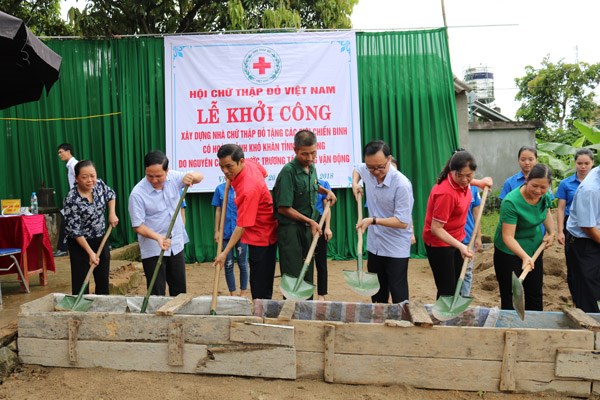
In the past years, besides the VNRC, the Vietnam Women’s Union, the Vietnam Farmer’s Union and the Ho Chi Minh Communist Youth Union have worked to mobilise resources to build houses for people in disaster-affected areas as part of the efforts to support them to have quick recovery from disasters and alleviate poverty.
